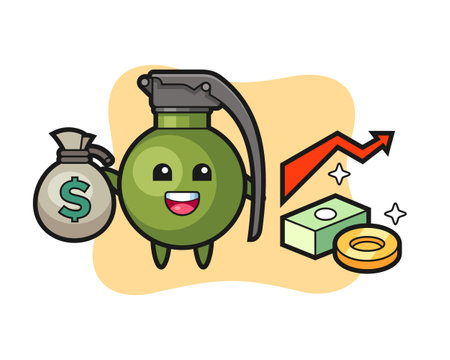1. Understand Your Student Loan Terms
Before you start making extra payments or choosing a repayment strategy, its crucial to fully understand the terms of your student loans. Knowing key details about your loan will help you make informed financial decisions and avoid costly mistakes.
(1) Know Your Loan Balance
The first step is to determine how much you owe in total. You can check your federal student loan balance by logging into the Federal Student Aid website. For private loans, you’ll need to contact your lender or check your most recent statements.
(2) Understand Your Interest Rates
Your interest rate affects how much youll pay over the life of the loan. Federal loans typically have fixed interest rates, while private loans may have variable rates. Higher interest rates mean higher overall costs, so prioritizing high-interest loans for early repayment can save you money.
(3) Explore Repayment Plans
Federal student loans offer several repayment plans, including:
| Repayment Plan | Description |
|---|---|
| Standard Repayment Plan | Fixed monthly payments over 10 years. |
| Income-Driven Repayment (IDR) Plans | Payments are based on your income and family size, with forgiveness after 20-25 years. |
| Graduated Repayment Plan | Payments start low and increase every two years. |
| Extended Repayment Plan | Allows for lower monthly payments over up to 25 years. |
(4) Track Key Deadlines
Missing deadlines for payments or enrollment in repayment plans can result in penalties and additional interest charges. Set reminders for due dates and stay updated on any changes to federal loan policies.
2. Make More Than the Minimum Payment
Paying extra each month can reduce interest costs and shorten your repayment timeline significantly. By allocating more than the minimum required payment, you can decrease the total amount of interest you pay over time and become debt-free sooner.
Why Paying More Helps
When you make only the minimum payment, a significant portion goes toward interest rather than reducing the principal balance. By paying extra, you target the principal directly, which lowers future interest charges.
Ways to Increase Your Payments
- Round Up Your Payments: If your minimum payment is $275, consider rounding it up to $300 or more.
- Use Windfalls Wisely: Apply tax refunds, bonuses, or unexpected income toward your student loans.
- Make Biweekly Payments: Instead of one monthly payment, split it into two smaller biweekly payments to make an extra full payment each year.
Impact of Extra Payments
| Monthly Extra Payment | Total Interest Saved | Time Saved on Loan |
|---|---|---|
| $50 | $3,000+ | ~2 years |
| $100 | $6,000+ | ~4 years |
| $200 | $12,000+ | ~7 years |
The more you pay beyond the minimum, the faster you can eliminate your student loan debt and save thousands in interest.

3. Explore Loan Forgiveness and Assistance Programs
Paying off student loans can feel overwhelming, but you may have options to reduce or even eliminate some of your debt. Loan forgiveness and assistance programs are designed to help borrowers manage their repayment burden. Check if you qualify for federal loan forgiveness or employer-sponsored student loan repayment benefits.
(1) Federal Student Loan Forgiveness Programs
The U.S. government offers several loan forgiveness programs for eligible borrowers. These programs typically require you to work in specific fields or make a certain number of qualifying payments.
(1) Public Service Loan Forgiveness (PSLF)
PSLF forgives the remaining balance on Direct Loans after 120 qualifying payments while working full-time for a qualifying employer, such as a government agency or nonprofit organization.
(2) Teacher Loan Forgiveness
If youre a teacher working in a low-income school for at least five consecutive years, you may qualify for up to $17,500 in loan forgiveness on Direct Subsidized and Unsubsidized Loans.
(3) Income-Driven Repayment (IDR) Forgiveness
Under an IDR plan, any remaining loan balance is forgiven after 20-25 years of qualifying payments, depending on the specific plan.
(2) State and Employer Assistance Programs
Some states and employers offer student loan repayment assistance to attract and retain talent. Check if your state or workplace provides any of these benefits.
(1) State-Sponsored Loan Repayment Assistance
Many states offer programs that provide financial aid to professionals in high-need fields, such as healthcare, law, and education.
(2) Employer Student Loan Repayment Benefits
Some companies help employees repay student loans by making direct contributions toward their debt. Check with your HR department to see if this benefit is available.
(3) Comparing Loan Forgiveness and Assistance Options
| Program | Eligibility | Benefit |
|---|---|---|
| Public Service Loan Forgiveness (PSLF) | Work full-time for a government or nonprofit employer; make 120 qualifying payments | Full remaining loan balance forgiven |
| Teacher Loan Forgiveness | Teach full-time in a low-income school for five consecutive years | Up to $17,500 in loan forgiveness |
| Income-Driven Repayment (IDR) Forgiveness | Make payments under an IDR plan for 20-25 years | Remaining balance forgiven after repayment period |
| State-Sponsored Loan Repayment Assistance | Varies by state; often for professionals in high-need areas | Partial or full loan repayment assistance |
| Employer Student Loan Repayment Benefits | Depends on employer policies | Direct contributions toward student loans |
Exploring these options can significantly reduce your student loan burden. Make sure to research eligibility requirements and apply for any programs that align with your career and financial situation.
4. Refinance or Consolidate Your Loans
Understanding when to refinance or consolidate your student loans can help you save money by securing a lower interest rate. Both options have their benefits, but its important to know the differences and determine which is best for your financial situation.
What’s the Difference Between Refinancing and Consolidation?
| Option | Description | Potential Benefits |
|---|---|---|
| Refinancing | Takes one or more existing loans and replaces them with a new private loan at a potentially lower interest rate. | – Lower interest rates – Reduced monthly payments – Potential to pay off debt faster |
| Consolidation | Merges multiple federal student loans into a single loan with an average interest rate of all combined loans. | – Simplifies repayment – Keeps federal loan benefits – Fixed interest rate |
When Should You Consider Refinancing?
If you have good credit and a stable income, refinancing may be a great way to lower your interest rate and save money. Here are some key indicators that refinancing could work for you:
(1) You Have a High-Interest Rate
If youre paying a high-interest rate on your current student loans, refinancing could secure a lower rate, reducing the total amount you pay over time.
(2) Your Credit Score Has Improved
Lenders offer better rates to borrowers with strong credit scores. If your credit has improved since taking out your original loans, refinancing may provide significant savings.
(3) You Don’t Need Federal Loan Protections
Refinancing replaces federal loans with private ones, meaning youll lose access to income-driven repayment plans and federal loan forgiveness programs. If these protections aren’t crucial for you, refinancing might be a good option.
When Should You Consider Consolidation?
If managing multiple student loan payments feels overwhelming, consolidation may simplify repayment without losing federal benefits. Here’s when it might make sense:
(1) You Have Multiple Federal Loans
A Direct Consolidation Loan combines multiple federal loans into one, making repayment easier while maintaining eligibility for federal forgiveness programs.
(2) You Want to Qualify for Income-Driven Repayment Plans
Certain federal loan types must be consolidated before they qualify for income-driven repayment (IDR) plans. If youre considering an IDR plan, consolidation might be necessary.
5. Boost Your Income and Cut Expenses
Paying off student loans faster often requires finding extra money in your budget. Whether its increasing your income or cutting unnecessary expenses, every dollar saved can be redirected toward loan payments.
Ways to Increase Your Income
Consider taking on additional work or seeking new opportunities to boost your earnings.
(1) Start a Side Hustle
A side hustle can provide extra cash specifically for loan payments. Some popular options include:
- Freelancing (writing, graphic design, programming)
- Driving for rideshare services
- Selling handmade or vintage items online
- Tutoring or teaching online courses
(2) Ask for a Raise or Promotion
If youve been performing well at work, consider negotiating a raise or seeking a promotion. Research industry salary trends and prepare a strong case before discussing it with your employer.
(3) Take on a Part-Time Job
If your schedule allows, a part-time job can supplement your primary income. Look for flexible roles that fit your skills and availability.
Ways to Cut Expenses
Reducing unnecessary spending frees up more money for loan payments.
(1) Create a Budget
Track your income and expenses to identify areas where you can cut back. Use apps like Mint or YNAB to manage your finances effectively.
(2) Reduce Discretionary Spending
Small changes can add up over time. Consider these adjustments:
| Expense Category | Ways to Save |
|---|---|
| Coffee & Dining Out | Brew coffee at home and cook meals instead of eating out. |
| Subscriptions | Cancel unused subscriptions and switch to lower-cost alternatives. |
| Entertainment | Opt for free events, library rentals, or streaming services with shared accounts. |
| Shopping | Use discount codes, buy second-hand, and avoid impulse purchases. |
(3) Lower Fixed Costs
Some fixed costs can be negotiated or reduced:
- Refinance loans for better interest rates.
- Negotiate lower bills (internet, phone, insurance).
- Consider downsizing housing if rent is too high.
By increasing income and reducing expenses, you’ll have more money available to pay down student loans faster.


